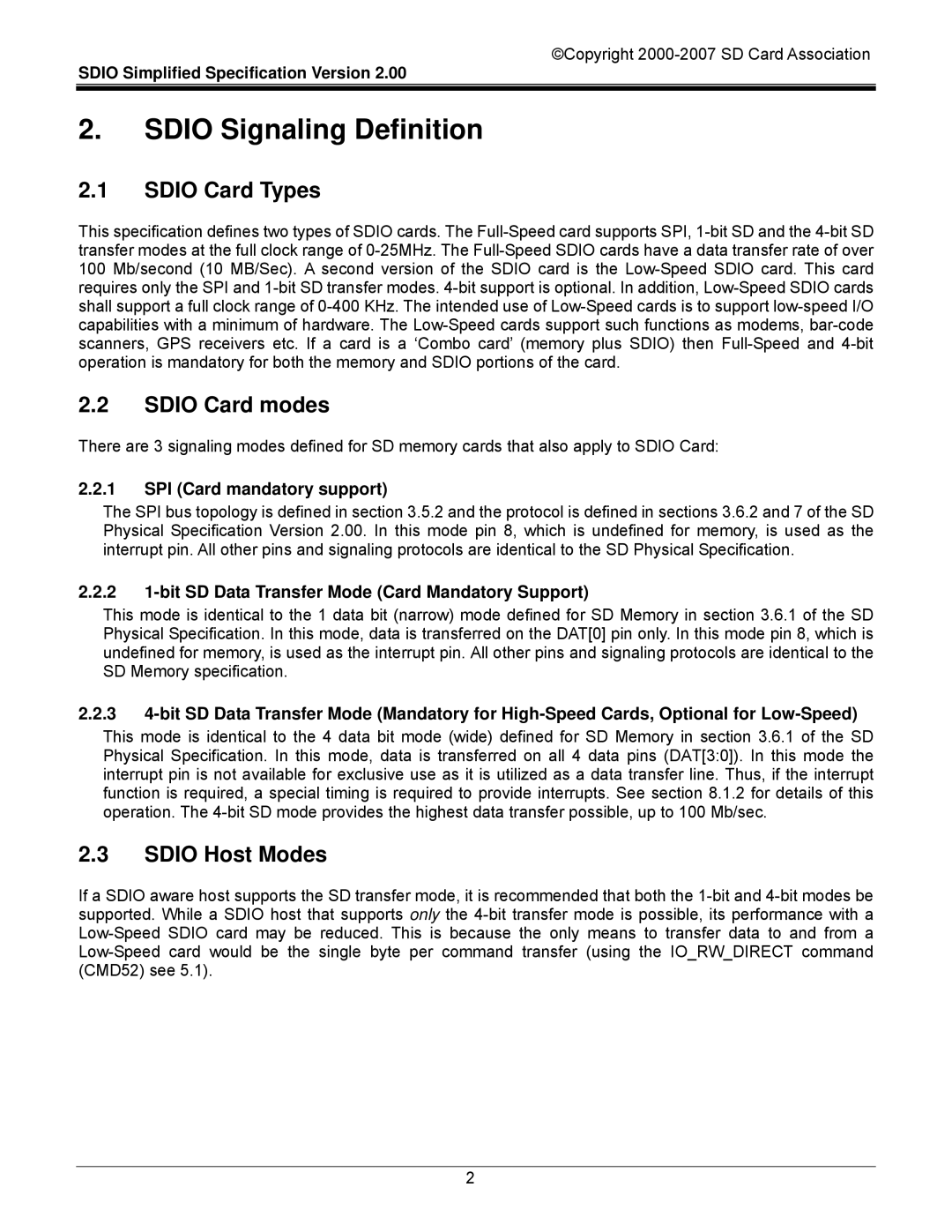
©Copyright
SDIO Simplified Specification Version 2.00
2.SDIO Signaling Definition
2.1SDIO Card Types
This specification defines two types of SDIO cards. The
2.2SDIO Card modes
There are 3 signaling modes defined for SD memory cards that also apply to SDIO Card:
2.2.1SPI (Card mandatory support)
The SPI bus topology is defined in section 3.5.2 and the protocol is defined in sections 3.6.2 and 7 of the SD Physical Specification Version 2.00. In this mode pin 8, which is undefined for memory, is used as the interrupt pin. All other pins and signaling protocols are identical to the SD Physical Specification.
2.2.21-bit SD Data Transfer Mode (Card Mandatory Support)
This mode is identical to the 1 data bit (narrow) mode defined for SD Memory in section 3.6.1 of the SD Physical Specification. In this mode, data is transferred on the DAT[0] pin only. In this mode pin 8, which is undefined for memory, is used as the interrupt pin. All other pins and signaling protocols are identical to the SD Memory specification.
2.2.3
This mode is identical to the 4 data bit mode (wide) defined for SD Memory in section 3.6.1 of the SD Physical Specification. In this mode, data is transferred on all 4 data pins (DAT[3:0]). In this mode the interrupt pin is not available for exclusive use as it is utilized as a data transfer line. Thus, if the interrupt function is required, a special timing is required to provide interrupts. See section 8.1.2 for details of this operation. The
2.3SDIO Host Modes
If a SDIO aware host supports the SD transfer mode, it is recommended that both the
2
